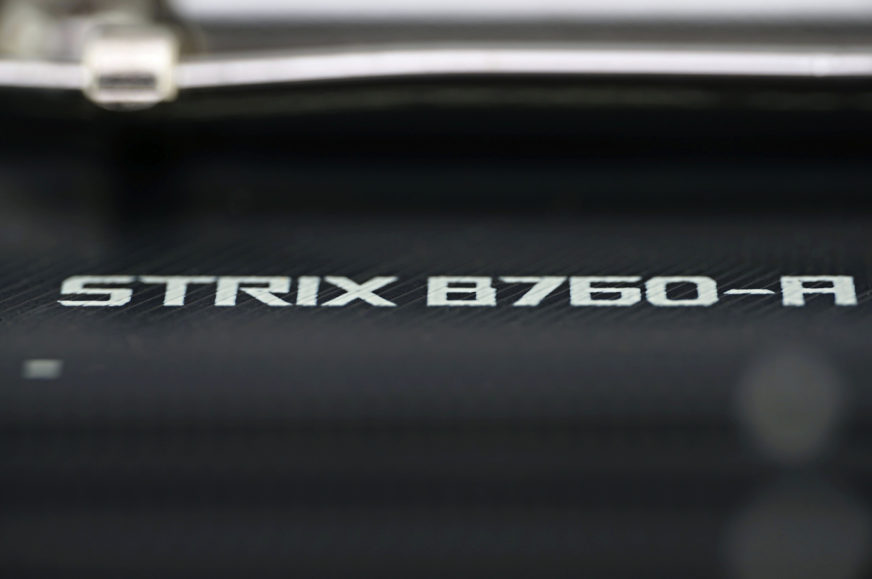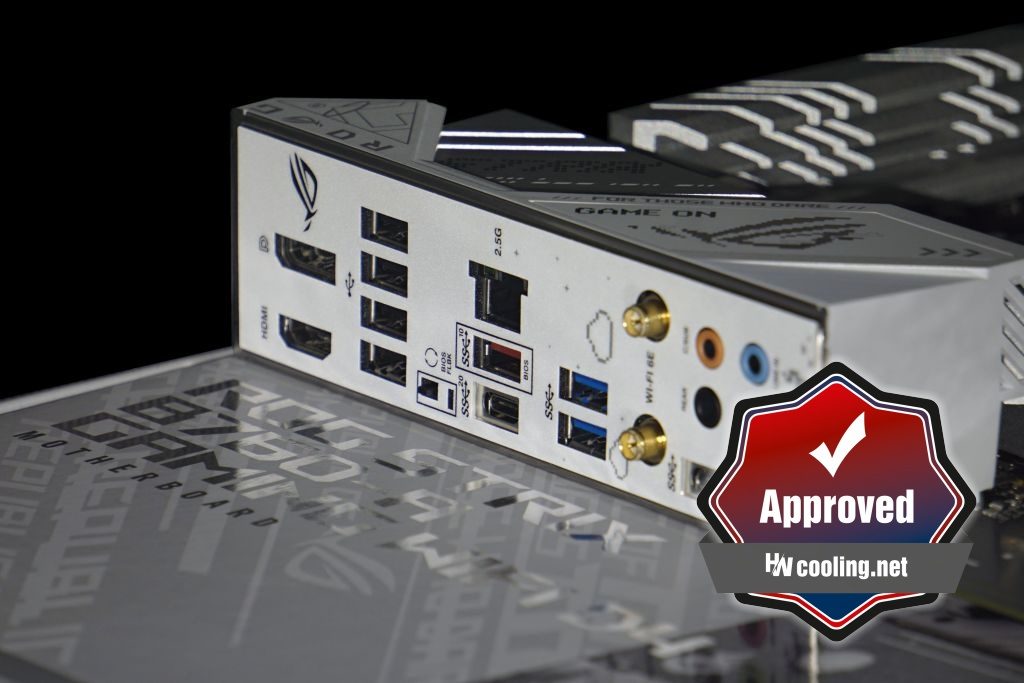Conclusion
After the Z790 motherboards for the Intel LGA 1700 platform, models with cheaper B760 and H770 chipsets are also coming out. In this test, we’ll take a detailed look at the Asus ROG Strix B760-A Gaming WiFi D4 motherboard, which takes full advantage of what the new chipset (B760) brings. You’ll also get a general idea of how the Core i9-13900K processor performs with DDR4 memory compared to the faster DDR5 modules.
Conclusion
This board is especially interesting for owners of processors from higher classes, such as the Core i7-13700(F) and Core i9-13900(F). For the cheaper Core i5 processors, many will already be choosing from the cheaper models in order to keep the overall build appropriately balanced. The Strix B760-A Gaming WiFi D4 is one of the most expensive boards with the B760 chipset, but at the same price as you’d pay for a Z790 board, it typically has a richer selection of both internal (including two 19-pin connectors for plugging in four USB 3.2 gen. 1 ports) and external connectors.
Sure, compared to the Z790 boards, there is no option to manually overclock the CPU by changing the multiplier, but you won’t use it with the 65W TDP Raptor Lake models anyway. The more robust power delivery that this board has will come in handy here though. Even the Core i7-13700 already has a fairly high PL2 (219W) for reaching the maximum CPU core clock speeds under high multi-threaded loads.
We measured the VRM temperature to be quite high, 102 °C at the hottest point on the voltage regulator housing, 86,5 °C on average. But that’s with the Core i9-13900K with no power limits under load which is beyond the common practice this board expects (when a lower-power processor is used). With the VRM cooler fitted, temperatures won’t climb to a hundred degrees Celsius even with that Ci9-13900K. Power efficiency is weaker.
In Shadow of the Tomb Raider, CPU power draw is 19 % higher than with the Gigabyte Z790 Aorus Elite AX at similar gaming performance. In Cinebench it’s already up to around 328 W for both, but again the slightly lower computing power speaks against the Strix B760-A Gaming WiFi D4. Especially because under high load with AVX instructions a lower CPU clock speed is achieved, on average by 160 MHz. With lower-power processors, the difference in clock speeds will be lower to nonexistent (the board does not need to set a negative offset with them at all) and there will be smaller to negligible differences in efficiency.The idle power draw is always quite low for Raptor Lake processors on this board, under 20 W.
M.2 slot speeds are above average, the same statement is true for USB ports. Ethernet connection results are already in the bottom half of the charts, but it’s still above 280 MB/s in both directions (download and upload). You don’t have to worry about the capabilities of SSD coolers, both are among the best we’ve tested so far.
The Asus ROG Strix B760-A Gaming WiFi D4 is a very solid motherboard with which you can save quite a bit in terms of overall build with cheaper DDR4 memory. Whether it makes sense or not (from the point of view of buying memory and shorter lifespan of the older standard), that’s up to you. The performance difference between the average DDR4 (3600) and DDR5 modules (6000, with those I have tested the Asus ROG Strix Z790-E Gaming WiFi and Gigabyte Z790 Aorus Elite AX boards) is, as you can see from the test results, usually insignificant even with Core i9 processors.
English translation and edit by Jozef Dudáš
| Asus ROG Strix B760-A Gaming WiFi D4 |
| + Decent 14-phase power delivery (VRM)... |
| + ... can handle, without performance loss, even the Core i9-13900K without power limits |
| + Three four-lane M.2 SSD slots... |
| + ... and overall a rich selection of internal and external connectors |
| + As much as nine USB connectors on the rear I/O panel |
| + Very detailed fan management options |
| + Fast ethernet connection in both directions |
| + The perfect Q-release system to demount a card in the first PCIe ×16 slot |
| - Lower VRM efficiency |
| - Higher temperature of voltage regulators (Vcore) |
| - Only four SATA connectors |
| Suggested retail price: 248 EUR |
Some of the tested motherboards are also available in the Datacomp e-shop
Special thanks to Blackmagic Design (for licenses for DeNoise AI, Gigapixel AI and Sharpen AI) and Topaz Labs (for licenses for DeNoise AI, Gigapixel AI and Sharpen AI)
- Contents
- Asus ROG Strix B760-A Gaming WiFi D4 in detail
- What it looks like in the BIOS
- Methodology: Performance tests
- Methodology: How we measure power draw
- Methodology: Temperature and clock speed measurements
- Test setup
- 3DMark
- Borderlands 3
- F1 2020
- Metro Exodus
- Shadow of the Tomb Raider
- Total War Saga: Troy
- PCMark and Geekbench
- Web performance
- 3D rendering: Cinebench, Blender, ...
- Video 1/2: Adobe Premiere Pro
- Video 2/2: DaVinci Resolve Studio
- Graphics effects: Adobe After Effects
- Video encoding
- Audio encoding
- Photos: Adobe Photoshop, Affinity Photo, ...
- (De)compression
- (De)encryption
- Numerical computing
- Simulations
- Memory and cache tests
- M.2 (SSD) slots speed
- USB ports speed
- Ethernet speed
- Power draw without power limits
- Power draw with power limits by Intel
- Achieved CPU clock speed
- CPU temperature
- VRM temperature – thermal imaging of Vcore and SOC
- SSD temperature
- Chipset temperature (south bridge)
- Conclusion













